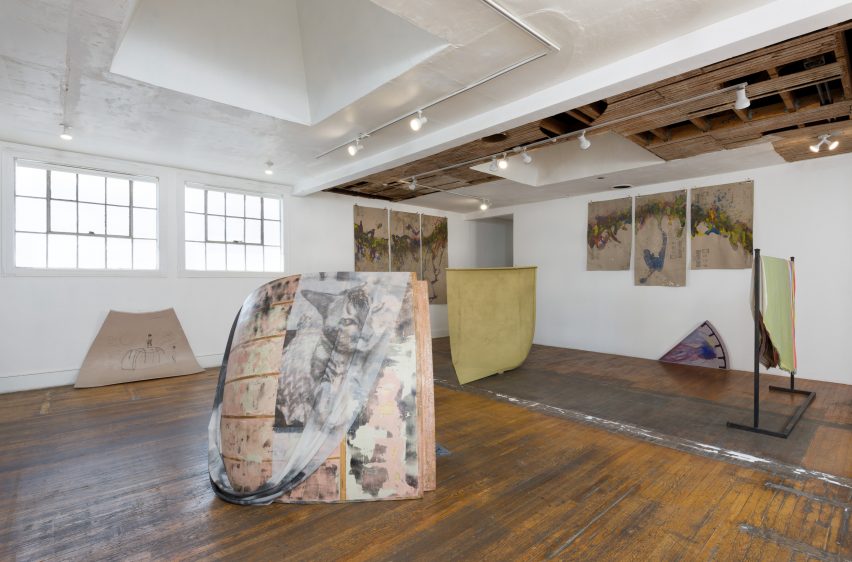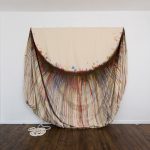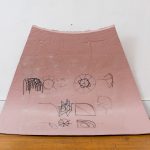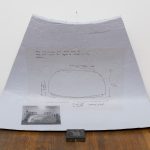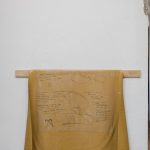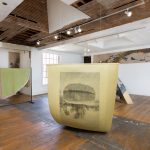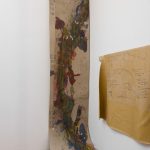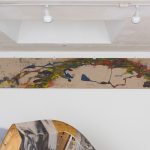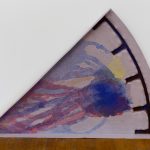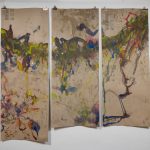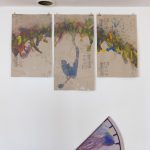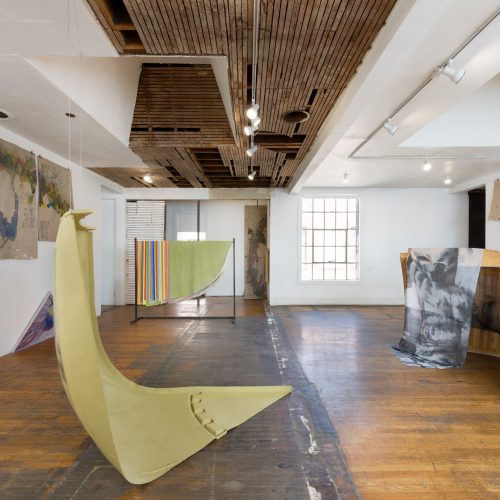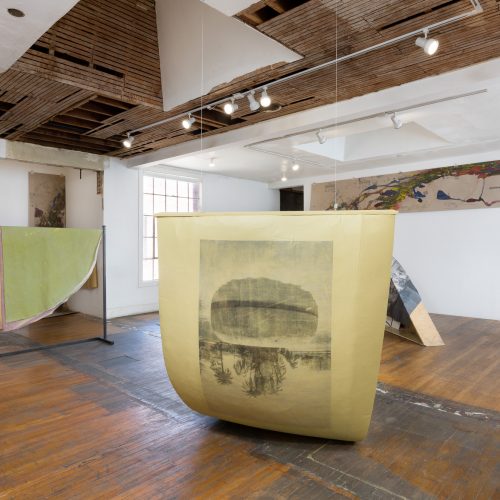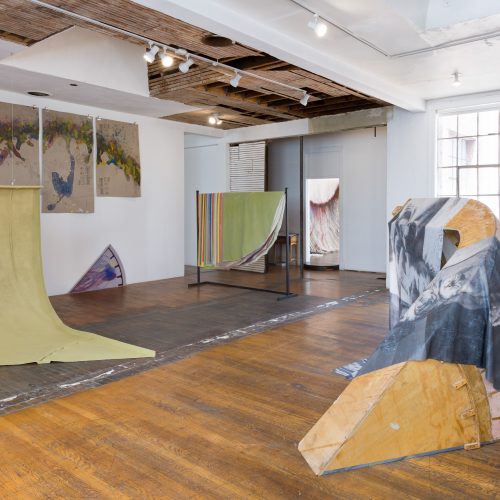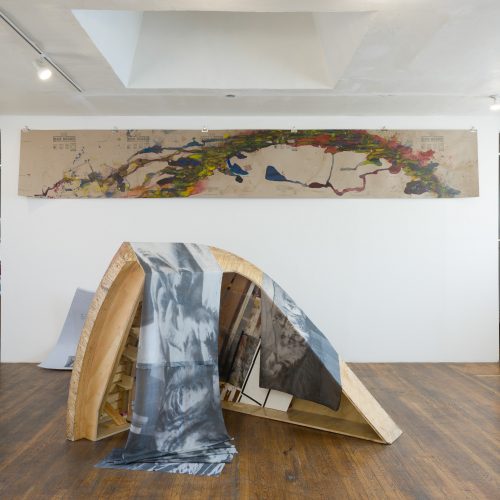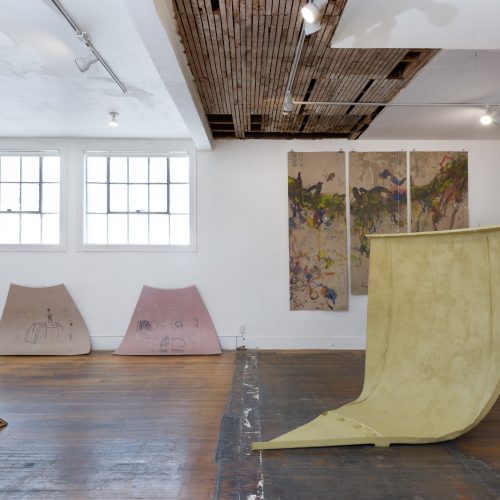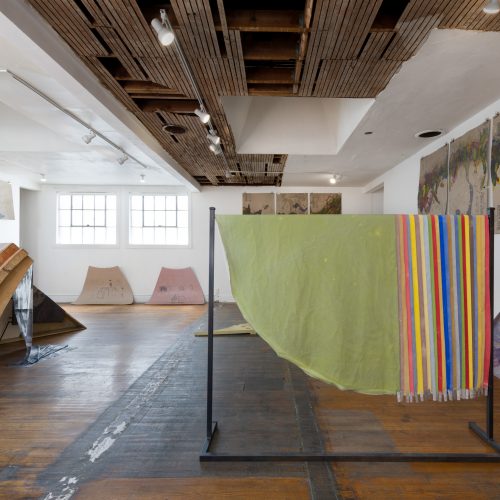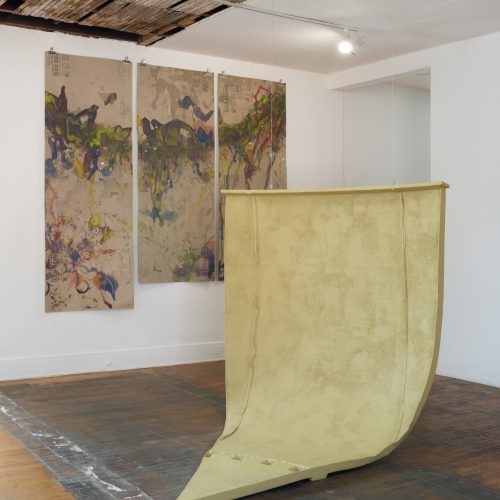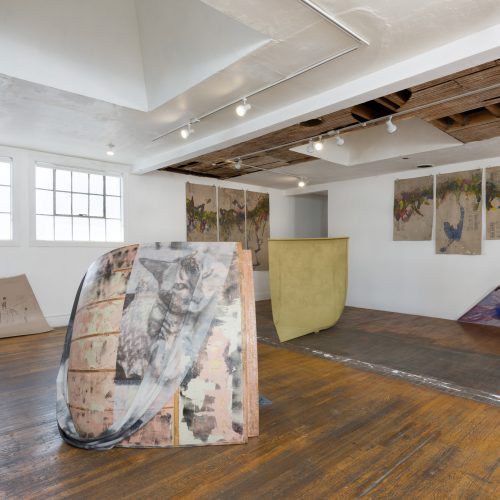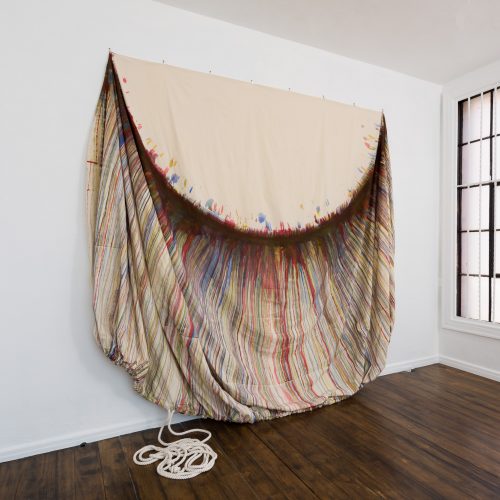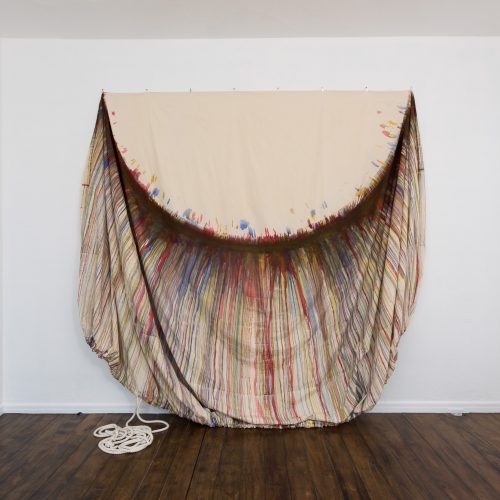The Artist, having used all her money to make the work, lives in the mother-mold of her sculpture
Commonwealth and Council presents Carmen Argote’s The Artist, having used all her money to make the work, lives in the mother-mold of her sculpture.—an exhibition which builds directly upon the remains of her contribution to Made in L.A. 2018 at the Hammer Museum, Filtration System for a Process Based Practice.
Walking around Eastlake in Lincoln Park, Argote noticed a small concrete island. She imagined herself standing on it and looking out onto the park, already a sort of island in the city. The island turned out to be a cover, concealing the lake’s filtration system. This shifting perspective led Argote to reconstruct the “island” to scale in the confines of her studio, where it became a sculptural work space offering her a new vantage point.
Rather than suppress the circumstances of art making, Argote builds artworks animated by the conditions impacting her practice—including economic hardship. Yet just being an artist entails a privileged position. What does it mean to have no money, yet still have the freedom to own one’s time, to have that walk in the park, and to participate in the creative economy? And what of the artist’s life?
This island shelters and sustains what the art world does not—life itself, with its crucial nexus of practice. For Argote, the mound served as a direct platform for making art: work space and material support in one. Using the top of the mound as studio, she painted 8 foot diameter cut muslin circles in a range of solid colors—allowing excess paint to drip onto the form, documenting the repetitive action and marking the form’s contour. All of these surfaces, the circles and the mound itself, became the artwork presented at the Hammer.
The 1/8th section mother-mold, from which the entire fiberglass circular mound had been cast, was all that remained in Argote’s possession following the show: “It is the mother-mold that will now become the island and my shelter for my process to take form.” Remembering the casting process of the original mound, she began making a new one, this time using paper mache and plaster. All of the elements in the present exhibition are direct imprints of the process that ensued—from the new array of painted muslin circles, to the floor covering used to catch dripping paint, to impressions taken from the inside surface of the mother-mold. Argote finally inverts the concealing function of the filter cover, literally opening its layered contents to view.
An island: part exile, part refuge. From her replicated mound, Argote surveys the fraught situation of life as an artist—the precarious economy of artistic labor, despite its privileged location in the production of aesthetic value. Like Arte Povera artists of the 1960s, Argote uses basic sculptural forms to consider things like process, gravity, and time; in particular, the role of such seemingly abstract shapes in locating our sense of the urban landscape. A filter is a medium: it keeps certain things out, but more importantly it establishes a boundary whereby everything outside approaches, enters, and gets processed—sustaining a livable ecology, recontextualizing material intake, and building up a record along the way.
Photos by Ruben Diaz
